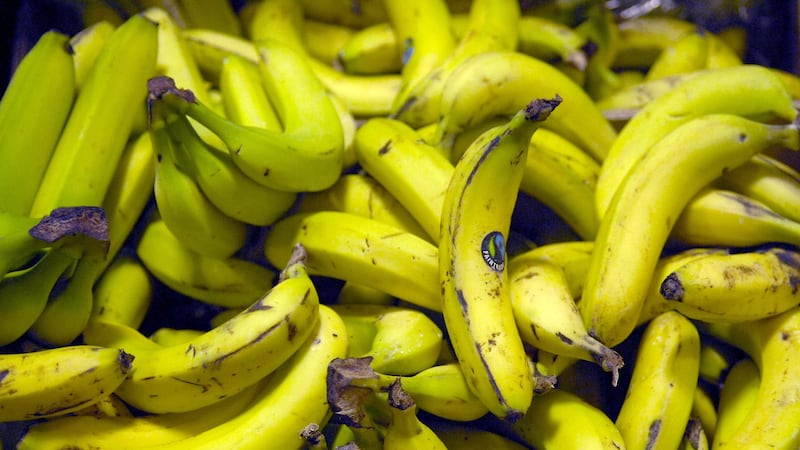AN English poet famously referred to autumn as a "season of mists and mellow fruitfulness".
The early Irish Celts had their own take on this season as the year declined into winter.
They called it Samhain, which literally means 'the end of summer', with the word pronounced roughly as "saw-en".
It embraced the end of one year and the beginning of another. There are paradoxes here - but that's part of the Celtic genius.
One of the most elusive challenges for the Christian missionary to Ireland in the early centuries was that among the Celts there was no state religion, because there was no state.
So when Christianity came, there was no official religion to confront. Yet religion was everywhere - in the air one breathed, and that had been breathed from time immemorial.
Religion was in and through the fertility cycle that accompanied the cycle of the seasons; for the fertility cycle was everything, so the seasons were at the heart of people's spirituality - though it's doubtful if they had any such concept as spirituality; had our parents and grandparents?
Basically the pagan religious practices in early Celtic Ireland were those of rural, nomadic herders and gatherers, who followed the solar calendar.
Thus religion marked the progression of the seasons and their rhythms, with time-honoured rituals, feasts and other observances, that ensured the survival of man and beast, and gave meaning to their existence.
When the Christians came, they had to show that their God and the Christian way would be more effective in ensuring survival and in providing meaning.
They proved very successful in doing so, partly because the evangelisation programme was of like to like - that's to say, Celt to Celt.
There's a theory that Christian ministers - never mind their converts - in those early centuries never altogether ceased believing in the spiritual ethos of the pre-Christian.
Some of the clergy, even down to recent times, remained very much in the mould of the pre-Christian druids.
There is no evidence of belligerent confrontation arising from the new religion trying to insinuate itself into the life and customs of the native population: for "in God we live and move and have our being" - how Celtic, and how Christian.
With regard to the Celtic season of Samhain, which began around what we would call early November - a season with special supernatural associations and the blurring of distinctions between the worlds of the living and of the dead - the Christian community took this on board in its liturgical calendar by having special commemorations of the faithful departed.
So eventually there was an All Saints' Day, marked on November 1, and All Souls' Day, on November 2.
In fact, the whole month of November was given over to the dead.
The Celt, unlike the Anglo-Saxon, was comfortable with death and the dead.
If this new religion Christianity was to be successful, it too had to be similarly comfortable - and it was.
So instead of trying to suppress or be at odds with the prevailing practices, it gathered up - harvested - Samhain's rich symbolism and associations and baptised them, if you will.
Regrettably, in comparatively recent times, Samhain, under the guise of Halloween on the eve of All Saints', has morphed into a nonsensical circus of skeletons, witches in pointy hats, masks, trick or treat, gouged turnips and the like - which has nothing to do with the Celts or Christianity, but is the product of American secular capitalism.
Of course at the centre of the seasonal cycle, and hence of Samhain and its mythology, was the sun - its going away and hoped-for return.
The sun controlled everything - if it failed, everything else would fail. It controlled the seasons and fertility; it was essential for the health of man and beast.
Much later, perhaps part of the trouble with Galileo was that he would put the sun back at the centre of things - centuries after Christianity had dislodged it.
Christianity had come to terms with the sun and with the hold that it had on people.
The sun had to be 'baptised' - so Christ became the sun, the light that the darkness was not able to overwhelm.
A strange incident in Patrick's life seems to pick up on this contest. The account, found in Confession, par.20, is not quite clear but it looks like a struggle between Christ and the sun, apparently locked in conflict for Patrick's soul, and hence for the future of Patrick's mission and the future religion of the Irish.
Not surprisingly, the birth of this new sun, Jesus Christ, was anchored at the winter solstice - the moment when the old sun goes into the tomb of Newgrange awaiting re-birth.
Newgrange, you may recall, was pre-Celtic - so, probably was Samhain - but seems to have been retained and used by the Celts.
Although we aren't sure why, the dates of the solstice and the birth of Christ are now slightly out of alignment, as are those of the spring equinox on March 21 or 22.
Liturgically there is the custom of lighting candles progressively throughout Advent: the light of Christ, who is the true sun, is getting closer.
Over and over again, the liturgical texts implore Christ to return, as I suppose the druids implored the sun: "Lord come to your people and set them free. Come and show us the way of truth."
At Vespers, evening prayer, on the December 21 solstice we pray:
"O Rising Sun you are the splendour of eternal light, and the sun of justice.
"O come and enlighten those who sit in darkness and in the shadow of death."
:: Fr Jim McCormack CM is author of Saint Patrick: The Real Story - As Told in his Own Words (Veritas), a translation of Patrick's Confessio into contemporary language written while a lecturer in Ecclesiastical History in All Hallows College, Dublin.
He can be contacted by email at jmccormackcm@gmail.com



